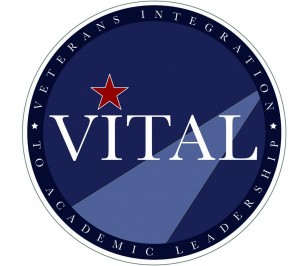Taking on Trauma
Professor Annabel Prins ’83 helps
veterans with PTSD to heal in
spirit, mind, and body
Professor Annabel Prins ’83 helps
veterans with PTSD to heal in
spirit, mind, and body
For as long as she can remember, Annabel Prins ’83 has wanted to help others. To her Dutch parents who lived through World War II and immigrated to the United States in 1968, she was known as “een liefje met een groot hart” which means a “generous girl with a big heart.” Prins selected Springfield College because of its reputation for preparing students for careers in education and the helping professions.
Now, as a professor of psychology at San Jose State University and a clinical psychologist with the VA National Center for PTSD, Prins teaches students and health care professionals about the physical and psychological consequences of trauma, especially war trauma, and post-traumatic stress disorder (PTSD).
Brought on by life-threatening or traumatic experiences, PTSD prevents sufferers from living normally due to persistent and unwanted memories of the trauma, nightmares, and flashbacks, for example. Avoidance of trauma reminders, hypervigilance and hyperarousal, and altered beliefs and emotions (such as fear, anger, or guilt) are also common symptoms of PTSD. The National Institutes of Health estimates that PTSD affects about 7.7 million American adults, including almost 31 percent of Vietnam veterans, 10 percent of Gulf War (Desert Storm) veterans, 11 percent of veterans of the war in Afghanistan, and 20 percent of Iraq War veterans.
Prins’ mission is to help veterans with PTSD. “Lincoln talked about our obligation to care for those who have borne the battle for their country,” she says. “Providing health care and education to veterans is the least a decent society can do. My mission, like the mission of the National Center for PTSD, is to advance the clinical care and social welfare of America’s veterans through research, education, and training in the science, diagnosis, and treatment of PTSD and stress-related disorders.”
When Prins arrived on campus in the late 1970s, her focus was on preventing war, not treating the psychological sequela of war. After living in Amsterdam for six months and following the work of Dr. Helen Caldicott, founder of Physicians for Social Responsibility, Springfield College was a bit of a culture shock to her. Prins refused to wear the first-year beanie, and appreciated Professor of Exercise Science and Sport Studies Mimi Murray’s no-nonsense response to her hippie style: “The feather earrings are cool, Annabel, but they gotta go for volleyball.” Murray would become one of Prins’ most important mentors. “When it comes to teaching and engagement with students and the learning process,” she says, “there was no finer role model than Dr. Murray.”

Prins double-majored in psychology and health fitness, took a semester abroad in London—where she did an independent study with Professor of Psychology Henry Paar—and credits Professor of Psychology Jonathan Kahane for her understanding of behavioral principles. Prins tells the story of how she once lost track of an adventurous lab rat in the corridors of Locklin Hall for one of Kahane’s classes. (She is quick to add that she eventually found it again and restored it safely to its cage.)
It was also at Springfield, she says, that she learned to focus her attention on other people’s stories—a skill that would be essential in her chosen profession.
“Rev. Kenneth Child and Father Leo Hoar both welcomed me into the Springfield College community, let me know that it was ok that I was not the beanie-wearing type, and really showed me, largely by example, how to listen with kindness and compassion and how to make room for lots of different people in the world,” she says.
That capacity for listening would become an important tool for Prins in clinical settings with veterans. Prins believes that sharing trauma stories with another person can be a powerful step toward healing.
“The research on treating PTSD supports the importance of disclosing your trauma experiences,” she says. “Of course, how you disclose, and to whom you disclose, and when you disclose are also important considerations. It’s not just a matter of purging yourself. But it is important to share those experiences. Concealment takes a huge psychological and physical toll. If you are actively trying to inhibit or conceal emotional responses or thoughts, it has the paradoxical effect of increasing those thoughts and feelings.”

Although PTSD was only designated as a psychological disorder by the American Psychiatric Association in 1980, the array of symptoms that define the disorder likely reach back to the beginning of human experience, and have turned up in literature for thousands of years. Achilles in his tent, Shakespeare’s Hotspur, and the character Jake in Hemingway’s The Sun Also Rises—all combat veterans—each exhibit behaviors that fit the diagnosis.
Clinical approaches to such disorders go back at least as far as World War I. A 1917 text on the topic published by England’s University of Manchester uses terms that have fallen out of clinical usage—such as “shell shock”—and addresses the struggles of fighting forces in very different conditions and of very different composition. Nevertheless, it presents a recognizable description of PTSD, a theory of treatment that aligns with Prins’ ideas about the importance of human connection, and speculation on causation that has since been confirmed by data:
Whatever may be the state of mind of the patient immediately after the mine explosion, the burial in the dug-out, the sight and sound of his lacerated comrades, or other appalling experiences which finally incapacitate him for service in the firing line, it is true to say that by the time of his arrival in a hospital … his reason and his senses are usually not lost but functioning with painful efficiency.
His reason tells him quite correctly, and far too often for his personal comfort, that had he not given, or failed to carry out, a particular order, certain disastrous and memory-haunting results might not have happened. It tells him, quite convincingly, that in his present state he is not as other men are. Again, the patient reasons, quite logically, but often from false premises, that since he is showing certain symptoms which he has always been taught to associate with ‘madmen,’ he is mad too, or on the way to insanity. If nobody is available to receive this man’s confidence, to knock away the false foundations of his beliefs, to bring the whole structure of his nightmare clattering about his ears, and finally, to help him rebuild for himself (not merely to reconstruct for him) a new and enlightened outlook on his future—in short, if he is left alone, told to ‘cheer up’ or unwisely isolated, it may be his reason, rather than the lack of it, which will prove to be his enemy.
Subsequent studies of PTSD confirm the importance of human contact for healing. Dr. Judith L. Herman, whose work Prins cites as an important influence on her own understanding of PTSD, has written that “recovery can take place only within the context of relationships; it cannot occur in isolation.” For a person suffering from PTSD, the loss of safety and control that trauma represents can be remedied only by the restoration of power and control to the survivor. “In renewed connections with other people,” Herman writes, “the survivor recreates the psychological faculties that were damaged or deformed by the traumatic experience.”
Prins works for the Dissemination and Training division of the VA’s National Center for PTSD, which means it focuses on outreach and education. Prins’ work at San Jose State also includes outreach to military and veteran students on the campus. About five years ago, she spearheaded a successful effort to win a VA grant that was instrumental in creating an on-campus Veterans Resource Center dedicated to assisting eligible student veterans, reservists, National Guard, active duty, and dependents. The grant provided funding for a full-time program coordinator and a part-time clinical psychologist. “It’s been very rewarding to bring a VA grant to the university,” Prins says. “The presence of military and veteran students at San Jose State has really grown and I’m very happy about that.”
Not only has Prins worked to establish resources for veterans and provided direct care to survivors of trauma, she has developed some of the tools used to assess PTSD. In her clinical work in primary care settings, she noticed that there were a number of well-developed, well-validated screens, or diagnostic tools, for depression. But in the VA, where the prevalence of PTSD is as high as that for depression, there were no brief screens for PTSD. Prins wanted to change that. In 2004, she developed and validated the Primary Care PTSD (PC-PTSD) screen which was adopted by the VA and the Department of Defense (DOD). More recently, she led a research group to update the PC-PTSD screen for greater consistency with the DSM-5—the standard classification of mental disorders used by mental health professionals in the United States.

Despite the compassionate, illuminating work of care providers and researchers like Prins, PTSD remains a disorder that all too often is stigmatized or viewed with skepticism. Because mental injuries are “hidden wounds,” sufferers can sometimes be seen as malingering—faking symptoms to get out of military service or to get compensation. While access to mental health services has improved, a March 2017 PBS News Hour report noted that about half of those diagnosed with PTSD still decline to seek treatment. A 2008 report by the American Psychiatric Association cited feelings of shame—and fear that seeking help might negatively affect military members’ careers—as significant barriers to finding help. Pushing back against such stigma is another important part of Prins’ work. “Screening for, and managing PTSD in primary care, is one way to destigmatize the disorder, and to recognize that spirit, mind, and body are all impacted by trauma,” she says.
It was [at Springfield] that she learned to focus her attention on other people’s stories—a skill that would be essential in her chosen profession.
Even as Prins works to help PTSD sufferers process the past, she is working to design therapies for the future. And while face-to-face therapeutic treatment remains essential for PTSD care, the digital age has ushered in other possibilities for education and self-help. Prins has been involved with VA and DOD web-based courses for service members and veterans, and recently completed a study looking at one such program. She has also completed a pilot study on a mobile app that targets provider burnout by increasing provider resilience.
In 2004, [Prins] developed
and validated the Primary Care PTSD (PC-PTSD) screen which was adopted by the VA and the Department of Defense.
For Prins, providing expert care means tending to her own balance of spirit, mind, and body, as well. “My effectiveness as a psychologist and teacher requires attention to my own emotional, intellectual, and physical growth,” she says. “Indeed, provider resilience is not only something I study but something I practice. The Humanics philosophy continues to be part of what I do on a daily basis.”2
“Screening for, and managing PTSD in primary care, is one way to destigmatize the disorder, and to recognize that spirit, mind, and body are all impacted by trauma.”
Brought on by life-threatening or traumatic experiences, PTSD prevents sufferers from living normally due to persistent and unwanted memories of
the trauma.



